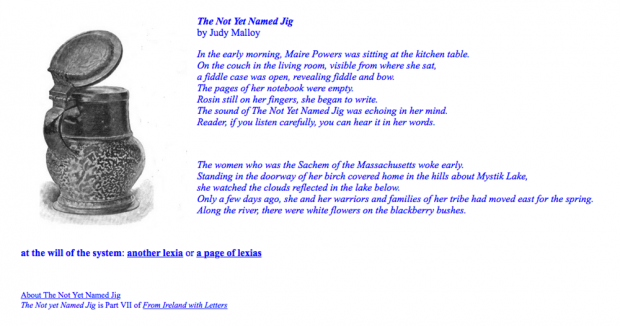The Not Yet Named Jig
The lexias for The Not Yet Named Jig appear at the will of the computer, one at a time, or, most effectively, in pages of five, where their meaning is magically changed by the lexias that randomly frame them. Thus, in the generating of many small scenes, a mise-en-scène for a larger narrative emerges. The time is the morning of April 24, 1660. The place is “Mystick Side” in the Massachusetts Bay Colony. The question was: How could I create a world model of a time and place when many details were simply not available? The answer was to write all known details into lexias, fictionalize only when necessary, and allow the computer to bring up the lexias at will. Building on the authoring system developed for file three of Uncle Roger in 1987–1988, generative hyperfiction was used in Its name was Penelope to create a whole picture of a photographer’s life by accumulating details as seen through her own eyes. In The Not Yet Named Jig, it is used to create a world model of a certain place at a certain time by accumulating historic details of the people and the environment in which they lived. The writing was intense, requiring with each added lexia, a constant replaying/rewriting until the narrative worked. Yet every time a five-lexia page was rebuilt, the story became clearer. What seems to be important is that there is no authorial structure to constrain the changing juxtaposition of narrative information.
(Source: ELO 2015 Conference Catalog)


